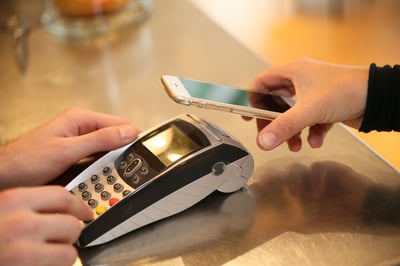When we think of theft, our brains might conjure up an image of a shady character carefully placing products into their oversized trench coat while expertly avoiding the attention of security. Or maybe you prefer the classic smash-and-grab by a group of balaclava-wearing criminals.
While both of these still exist, theft—especially in retail—is often more subtle and difficult to track without effective policies in place.
A study by eduMe (that’s us!) cited loss prevention as the second biggest pain point among retail leaders (after employee turnover, the seemingly unsolvable retail riddle). In fact, major retail brands including Target and Nordstrom have publicly stated their struggle to contain rising store crimes, and external shoplifting accounts for 36.5% of retail inventory shrinkage
But it’s not all doom and gloom. There are strategies retailers can adopt and optimize to prevent theft in-store and control inventory shrinkage. Keep reading to find out what those are.
Quick Navigation:
1. What is shrink in retail?
2. The different types of retail theft
3. Theft in retail: a growing problem
4. How to prevent theft in retail stores
What is shrink in retail?
Retail shrinkage is when a store's inventory decreases for reasons other than sales, and is usually attributed to five main causes: operational loss, administrative error, vendor fraud, customer shoplifting, and employee theft.
Customer shoplifting (37%) and employee theft (28.5%) are the leading causes of shrinkage among the group, yet theft is more complex than simply stealing products from a store, as we’ll explain in the next section.
Inventory Shrinkage: The different types of theft
Retail theft falls into two categories: external and internal theft.
External Theft
External theft is when a crime is committed against a retail business by those posing as customers. Shoplifting is one of the more common examples of external theft—stock is stolen by criminals posing as everyday shoppers. There’s also money fraud which involves paying for goods through illegal methods that include counterfeit cash, stolen credit cards, and fraudulent cheques. External theft is a growing problem in the US, with 74.1% of retailers reporting an increase over a 5-year period (2016-2021).
Internal Theft
Internal theft, or employee theft, is a crime committed against a retail business by its own employees. It’s a sensitive subject that retailers shy away from publicly disclosing, making it difficult to determine the extent of the problem accurately. However, nearly 57% of retailers identified internal theft as a growing risk over the past 5 years.
Employee theft is often more subtle and difficult to identify. In shoplifting cases, an employee’s intimate knowledge of the store and its protocols provides them with a blueprint on how to steal successfully. However, shoplifting is but one part of the problem. Freebies and discounts for friends and family, skimming, and identity theft are other common ways employees steal from their employers.
Theft in retail: A growing problem
Across the US, retailers of all sizes are highlighting their struggle to control rising store crimes. Retail giant Target said it was preparing to lose half a billion dollars this year due to retail theft, while Whole Foods and other established retailers said they were abandoning stores in San Francisco due to a change in economic conditions and employee safety.
It’s not yet entirely evident that crime is becoming more significant. But, amid faltering economies and historic inflation rates, logical assumptions can be drawn. 61% of Americans report suffering financial hardship, and many are struggling to afford basic necessities. For many, stealing bread is justified when you need to feed your family.
Of course, turbulent times are a breeding ground for organized crime, and large-scale retail store theft has increased by 26.5% since the previous year.
How to prevent theft in retail stores

So you might be wondering ‘How can I prevent theft in my store and control my inventory shrinkage?’ There are various effective loss-prevention strategies that retailers can apply to help reduce in-store crime. Below are some of our favorites.
CCTV Footage
CCTV acts as both a deterrent and an effective method of identifying theft. Most thieves are opportunists, and just the sight of cameras is enough to deter any criminal activity. When one is bold enough to make an attempt, CCTV allows you to catch them in the act or identify them later on (especially useful for employee theft).
Home Depot employs security cameras that directly show shoppers they’re on camera. This is effective because it quickly establishes to any potential criminals that the store is being monitored with working CCTV. Stores should make it as clear as possible to shoppers that a security presence exists, rather than placing cameras in inconspicuous places which reduces their effectiveness as a deterrent.
Crime Mapping
Crime mapping is when data is used to determine where crimes are likely to occur. It’s a strategy employed by law enforcement agencies across the globe that can easily be applied to the retail world.
When a theft occurs, retailers should keep a record of vital information including location, date, time, what was stolen etc. You then analyze the collected data to highlight high-risk areas and take appropriate measures.
For example, your data informs you that your electronics aisle is highly susceptible to theft, resulting in an increased security presence and extra CCTV surveillance in the aisle to deter future crimes. If your resources are limited, crime mapping helps optimize resource distribution.
Anti-theft Devices
An anti-theft device is exactly what it sounds like. These gadgets help reduce retail theft and can range from electronic tagging to ink tags. Let's look at some of the more common devices:
RFID Tags
Plastic security tags that utilize radio frequencies to trigger an alarm. These nifty gadgets have two sides that interlock when clipped onto a product, making them extremely difficult to remove unless you’re a staff member with the special opening tool.
Ink Tags
These devices are often used to deter theft rather than setting off an alarm. Traditionally used on clothing, when the tag is removed without the use of a special tool, the ink spills onto the item, ruining it in the process.
Specialty Tags
Certain products require their own specialized security tags. This could be because the more traditional tags won’t fit, or that retailers want to ensure security without minimizing product interaction. Eyeglass security tags are specially designed to fit around the frame without preventing shoppers from trying them on.
Employee Training
Employee training is the most effective way to prevent theft in your retail store. Training your workforce on theft prevention positions them as your first line of defense and allows them to work alongside any other security strategies you may employ.
Train your workforce to spot shoplifting, money fraud, and identity theft and educate them on what actions to take once they’ve identified suspicious activity. Preventing theft is important, but employee safety is paramount. If you don’t employ a dedicated security team then train your workers on how to operate CCTV, analyze data for crime mapping, and correctly fit security tags. Your security strategies are only optimized when they collaborate.
For addressing internal theft, ensure your workforce is aware of your whistleblower policy, and highlight the consequences of stealing. If employees understand their livelihood is at risk, they’re less likely to steal.
Although not always obvious at first glance, other types of training may also play a role in the prevention of theft. Company culture and values training is a great way to foster a sense of belonging among your workforce. You’re more than a workforce, you’re a family, and every action should benefit the group rather than the individual. If you successfully instill this message early on then employees may be less inclined to steal from those they value.
How to train your workforce
With retail theft on the rise, we recommend introducing some form of training as soon as possible. Including it in your onboarding training is a great way to immediately prepare your new employees for the task ahead. However, theft prevention is an ongoing process and your training should reflect this. Supplement initial training with continuous learning that updates your team on any new problems you’ve identified and strategies you want to try out.
We know training a retail workforce comes with its problems, and training a dispersed workforce that’s always on the move is no easy feat. Mobile training is a great way to roll out optimized training at scale. By taking advantage of widespread technology, you can deliver relevant and engaging security training when needed most.
eduMe is the platform of choice for retailers looking to roll out effective training at scale. By integrating into existing technology and providing businesses with a platform to customize and update training, retailers can ensure employees remain up to date on shoplifting policies and procedures.
Get in touch with us now to find out how we can help!






